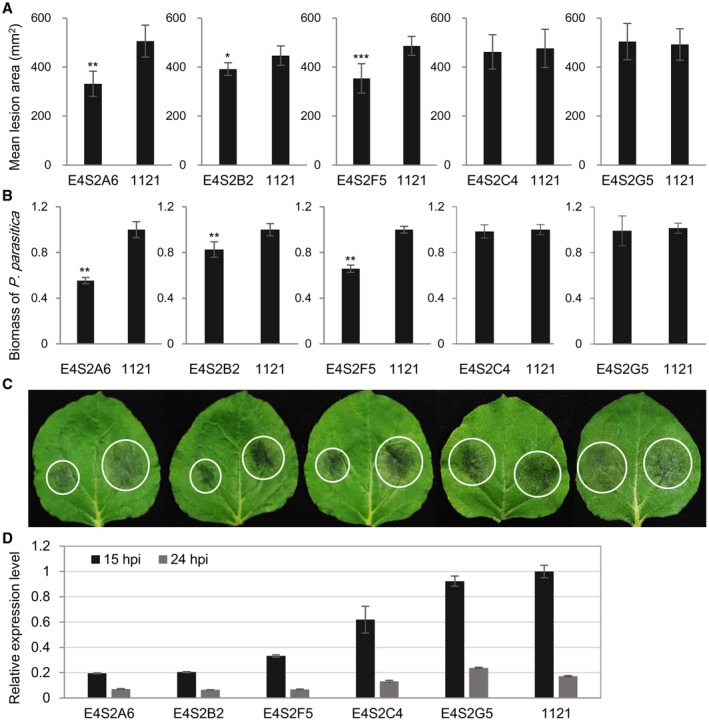Figure 3.

PpE4‐silenced Phytophthora parasitica transformants exhibit reduced pathogenicity. (A) Mean lesion areas of Nicotiana benthamiana leaves inoculated with PpE4‐silenced transformants and the control strain 1121 at 48 h post‐inoculation (hpi). The transformant and the control strain were inoculated on opposite halves of an N. benthamiana leaf. Error bars represent the standard deviation (SD) of 15 leaves, and asterisks denote significant differences from control strain 1121 (two tailed t‐test: *P < 0.05; **P < 0.01; ***P < 0.001). (B) Biomass of P. parasitica on N. benthamiana leaves determined by quantitative polymerase chain reaction (qPCR). Bars represent PpUBC levels relative to NbF‐box levels with SD of three biological replicates. Asterisks denote significant differences from control strain 1121 (two tailed t‐test: **P < 0.01). (C) Representative inoculated leaves. White circles outline the water‐soaked lesions. Similar results were obtained from more than three independent experiments with about 15 leaves for each experiment. (D) PpE4 expression was restored in two transformants E4S2C4 and E4S2G5, whose virulence was not reduced. The subcultured transformants were inoculated onto N. benthamiana leaves and sampled at 15 and 24 hpi. Reverse transcription (RT)‐qPCR was used to determine the PpE4 silencing level. The expression level of PpE4 in strain 1121 sampled at 15 hpi was given a value of unity. Error bars represent the SD of three biological replicates. Two independent experiments were performed with similar results. [Colour figure can be viewed at wileyonlinelibrary.com]
